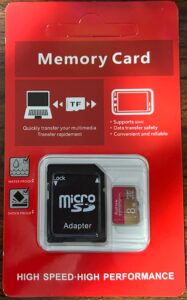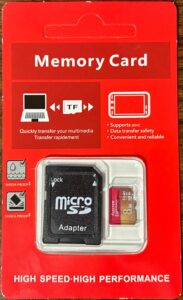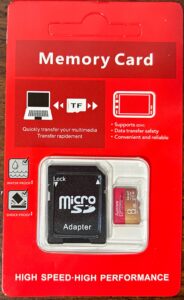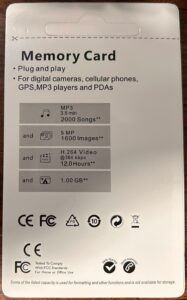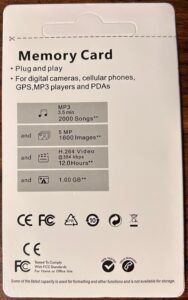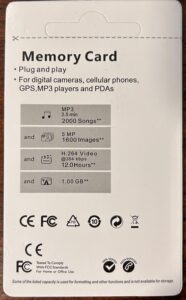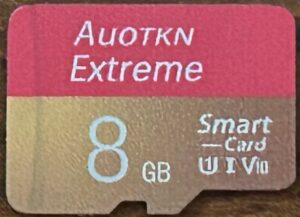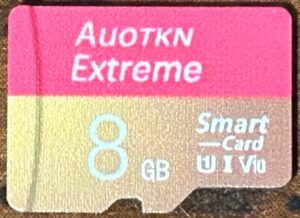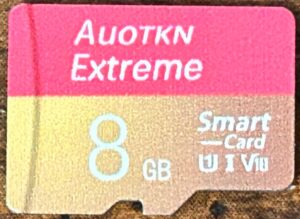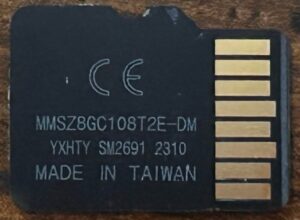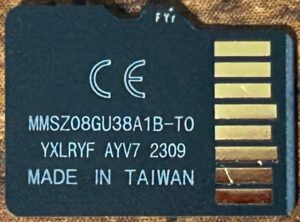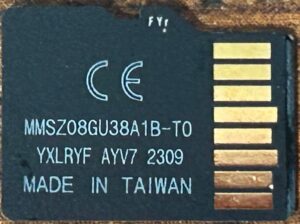- Obtained from: AliExpress
- Price paid: $2.58
- Advertised capacity: 8GB
- Logical capacity: 8,053,063,680 bytes
- Physical capacity: 8,053,063,680 bytes
- Fake/skimpy flash: No
- Speed class markings: U1, V10
Discussion
Auotkn is another brand that came up frequently while browsing AliExpress. The visual design is almost identical to that used by SanDisk’s Extreme cards — to the point where a casual observer from 10 feet away likely wouldn’t notice the difference.
I initially found it curious that the first two cards displayed such wildly different results on the performance test. It wasn’t until I compared the CID data between the two — which, admittedly, I didn’t do until I was writing this up — that I noticed that they are completely different. Initially I thought that maybe I got the CID data mixed up with one of my other cards — after all, card #1 shared the same manufacturer ID, OEM ID, product name, and product revision as the one QEEDNS card I’ve tested, and sample #2 shared the same values as the Cloudisk and Bekit cards — but after rechecking the data, it appears that I recorded it correctly the first time. This points to the conclusion that Auotkn may be in the middle of switching manufacturers. Or that they source their cards from multiple manufacturers. Or that they’re reselling used cards. On second thought, maybe this doesn’t point to any conclusion in particular.
Regardless, the cards have performed well on their endurance tests. All three managed to endure well over 2,000 read/write cycles without any errors, making it only one of two models I’ve tested so far to do so. As of this writing:
Sample #1’s first true* error was a two-sector wide corrupted data error during round 3,013. It survived 4,772 read/write cycles; during round 4,773, the number of failed sectors exceeded the 50% threshold. Here’s a graph of what this sample’s progression looked like:
Sample #2's first error was a 1,668-sector wide corrupted data error during round 5,450. It survived 26,041 read/write cycles; during round 26,042, the number of failed sectors exceeded the 50% threshold. Here's a graph of what this sample's progression looked like:
Sample #3's first error was an eight-sector wide address decoding error during round 11,822. It was the third card in my collection to survive 10,000 read/write cycles (after sample #1 of the Hiksemi NEO 8GB and sample #3 of the Bekit 8GB). Like the other two, the number of failed sectors only increased as time went on; it finally reached the 50% failure threshold during round 20,961. Here's the graph for this sample:
Overall, while these cards have done well on endurance tests, the tradeoff is speed -- they performed terribly on all of their performance metrics, even compared to the industrial-rated cards that I've tested. My advice is: don't buy them. There are better cards out there.
* Sample #1 experienced a failure during round 2,854, but this was due to problems with my code that handles disconnects/reconnects.
November 4, 2024


